Photo
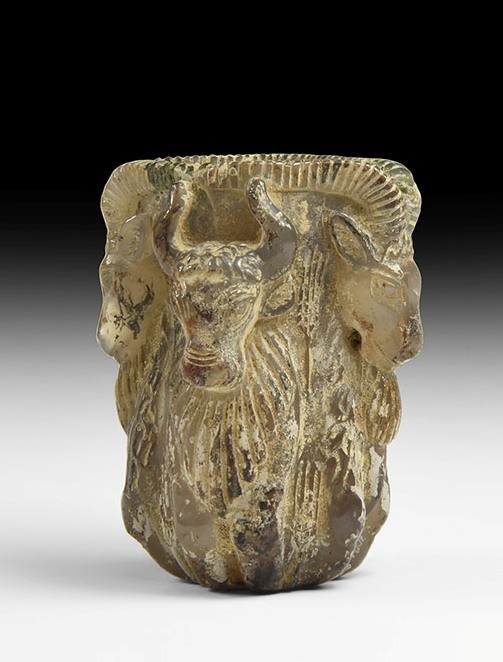
Greek Agate Kohl Pot, 5th-3rd century BC
A carved agate kohl pot or cosmetics phial formed as two addorsed rams' foreparts and two bulls', the rim formed by the conjoined horns of the rams. 99 grams, 60mm (2 1/4").
See it in 360° here.
891 notes
·
View notes
Photo

Sogdian Nobleman Scepter Finial, Late 1st ML BC
A substantial bronze finial or figurine of a male with hair swept back and held in place by a diadem; large, flat nose, wide eyes and small, pursed mouth; slender body and hands on hips; tang to bottom of waist for attachment. 364 grams, 10cm (4")
325 notes
·
View notes
Photo


Elizabethan Gold '+BEHOLD THE END' Mourning Ring for A N, Late 16th Century AD
A substantial Tudor D-section gold hoop with reserved foliage on black enamel field, scrolled capital to each shoulder and initials 'A' and 'N', the plaque a fluted hexagon with disc, legend to the perimeter '+DYE TO LYVE' and disc with '+BEHOLD.THE.END' surrounding a white enamel skull in three-quarter view. 17 grams, 26mm overall, 22.07mm internal diameter.
Watch this video for more info on this ring.
#history#post medieval#elizabethan#gold#ring#jewelry#mourning ring#16th century ad#skull#die to live#behold the end#tudor
3K notes
·
View notes
Photo

Viking Gold Elf Shot Pendant, 9th-12th Century AD
A gold 'elfshot' amulet with a rectangular cap decorated with applied roped border, securing a smooth agate(?) arrowhead; suspension gold ring to the top. 7.26 grams, 63.7mm including loop (2"). Very rare.
#history#vikings#elf shot#amulet#jewelry#9th century ad#10th century ad#11th century ad#12th century ad#viking#elfshot#apotropaic#agate#pendant
2K notes
·
View notes
Photo


Medieval Gold 'Think of me, Love' Heart-Shaped Ring Brooch, 13th-14th Century AD
A gold ring brooch with loop formed as acorns and oak leaves, the tongue tapered with acorn finial to the hinge; to the reverse, blackletter inscription '+pence de moy amor' which translates to 'Think of me, Love', with rosettes and leaves. 6.67 grams, 27mm (1").
See it on video
1K notes
·
View notes
Photo

Western Asiatic Silver Jeweler's Earring Hoard Group, 3rd ML BC
A round section silver ring threaded with twenty three silver earrings of the 'Navicella' type consisting of seven silver wires with that to the center with a longer section forming the hoop earwire. 68 grams total, 70mm (2 3/4")
374 notes
·
View notes
Photo
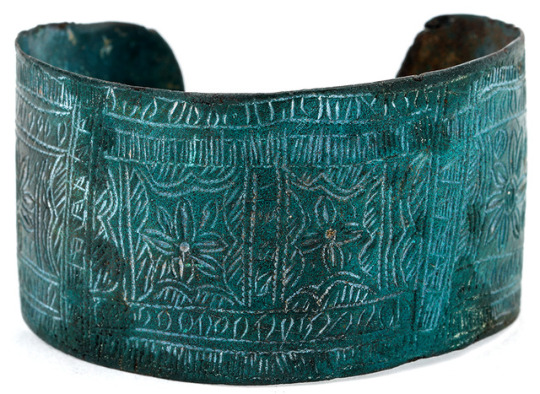
Late Roman or Byzantine Bronze Bracelet With Stylized Floral Designs, 4th-6th Century AD
Approximately 2 inches in diameter by 1.2 inches high. Six engraved box designs, each box with a stylized floral pattern. Box in middle has four pointed rays, sometimes used to portray the holy cross; the other have six to eight rays, used as the holy fish symbol to mark one’s faith.
569 notes
·
View notes
Photo
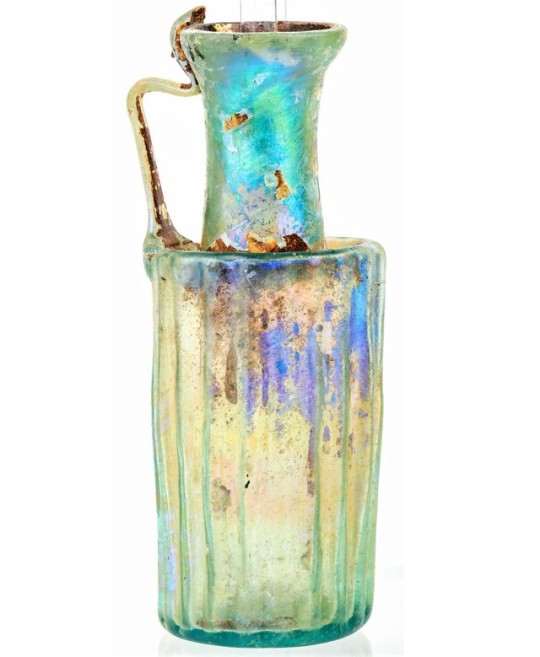
Roman Single-Handle Fluted Jug, 4th-5th Century AD
Mould-blown body with vertical fluting and applied neck and handle. Exhibits intense opalized sea-green and sky-blue iridescence. 4.5 inches (11.4cm) high
811 notes
·
View notes
Photo

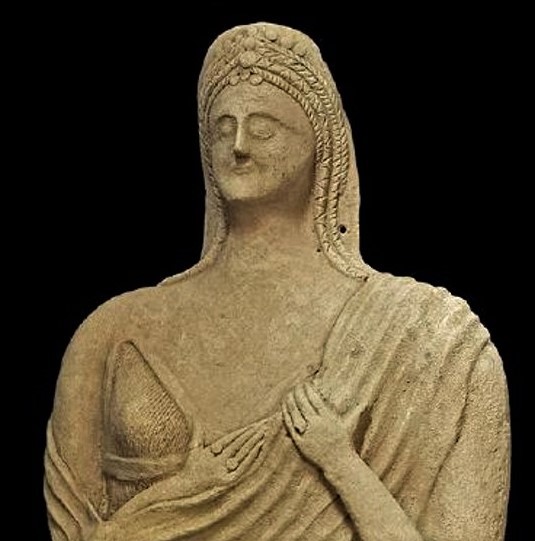
Greek Terracotta Standing Kore, 6th-5th Century BC
A hollow-formed terracotta kore with modeling to the front and sides, wearing a draped robe with pleated lower section and fold across the chest and left shoulder; ribbed and banded undergarment to the chest; elaborate braided hairstyle with pellets, finely modeled face with piercings beside the neck; hands raised to the left breast with three finger rings. 23 kg, 105cm (41 ¼")
The piece displays styles of Eastern Greek workmanship, possibly from one of the Greek islands, Cyprus, or one of the Greek colonies such as Cyrenaica, and is that of a kore (pl. korai), the name given to a type of free-standing ancient Greek sculpture of the Archaic period depicting female figures, always of a young age. They show the restrained “archaic smile”, but, unlike the nude male kouroi, the korai are depicted in thick drapery, ornate, and in painted examples very colorful. They often have elaborate braided hairstyles. There are a number of theories as to whom they represent with the most popular being that of the goddess Persephone as some are shown holding a pomegranate, a fruit associated with the goddess of the Eleusinian Mysteries.
Another theory is that they represent images of wealthy patrons and were set up in temples as offerings to the gods and to be a constant presence before the deity. Korai are found in most of the ancient cities of the Greek world, with the most famous being those from the Acropolis in Athens. Although they show a similarity in form with the arms either by the side or held up and holding a votive offering, the clothes reveal regional styles and the fashions of the elite in archaic Greek society.
473 notes
·
View notes
Photo
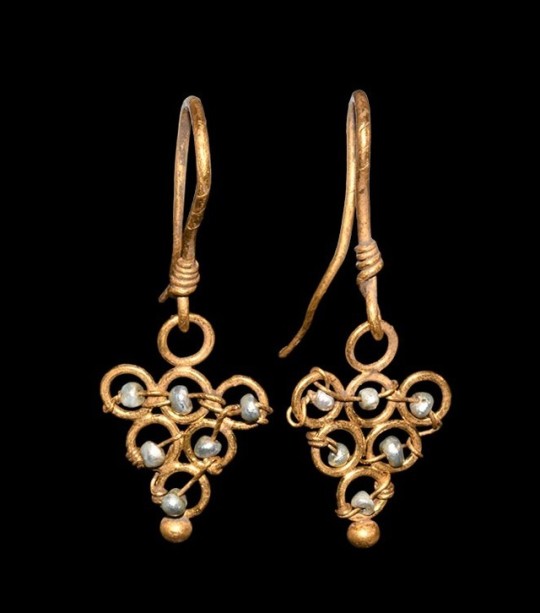
Greek Gold Earrings with Pearl Seed Beads, 3rd Century BC
895 notes
·
View notes
Photo
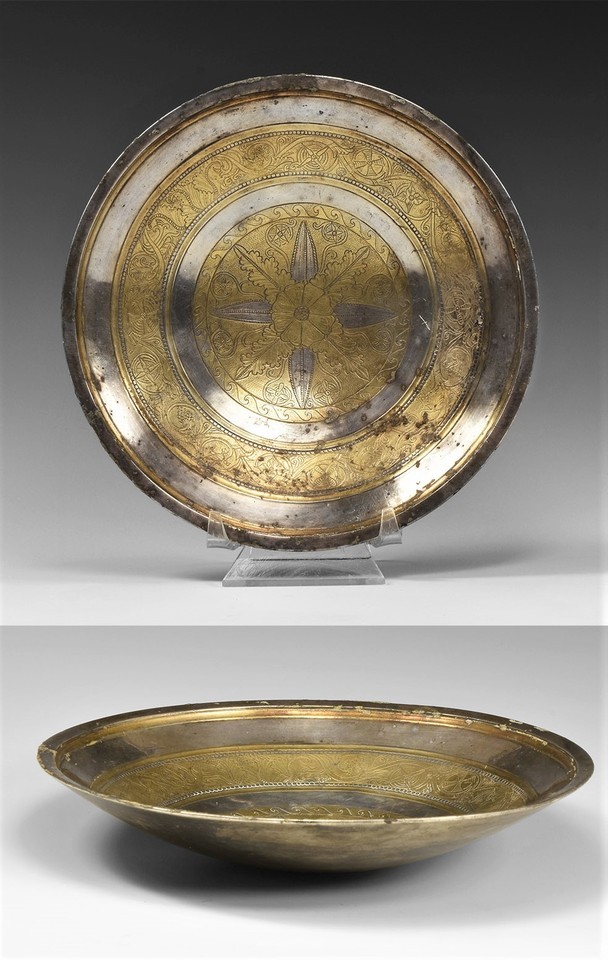
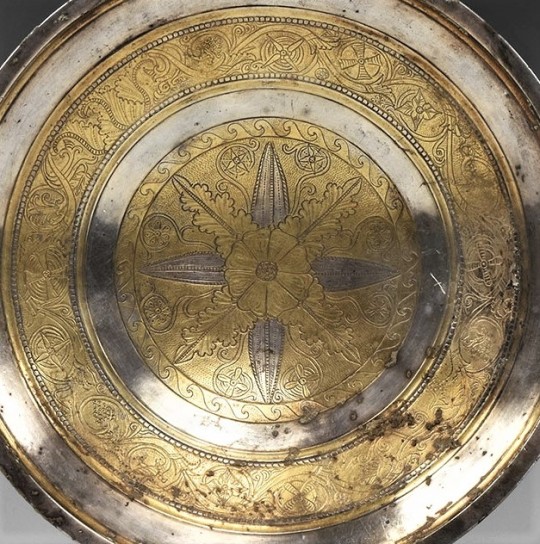
Hellenistic Gilt Silver Bowl with Complex Ornament, 2nd-1st Century BC
A shallow silver bowl with thickened chamfered rim, concentric gilt bands, one with reserve scrolled vines with bunches of grapes on a textured field; central disc with octofoil and four radiating leaves, coiled tendrils on a pointillé textured field with running wave border. 254 grams, 17.5cm (6 3/4".
Watch it described on youtube
704 notes
·
View notes
Photo
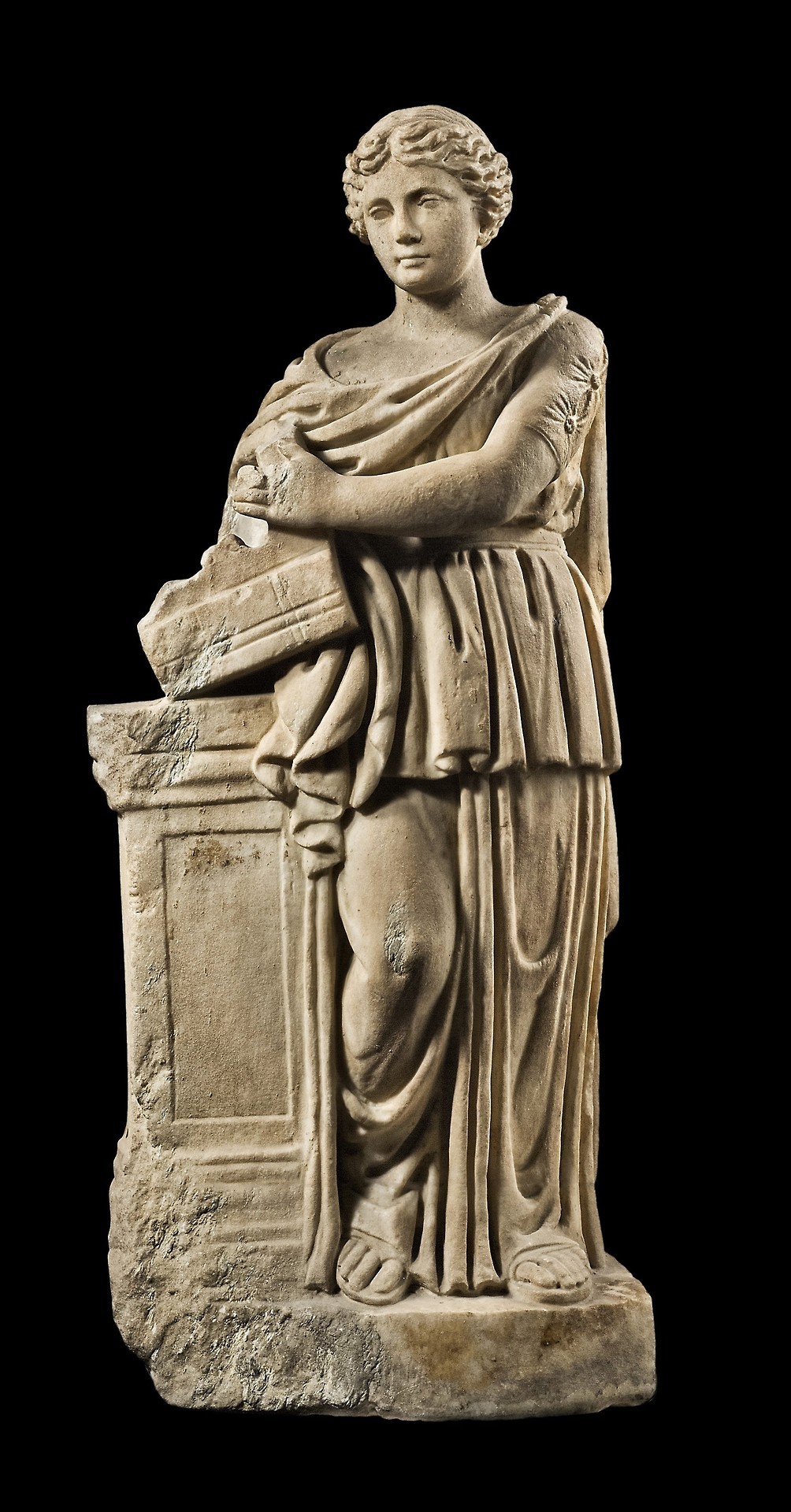
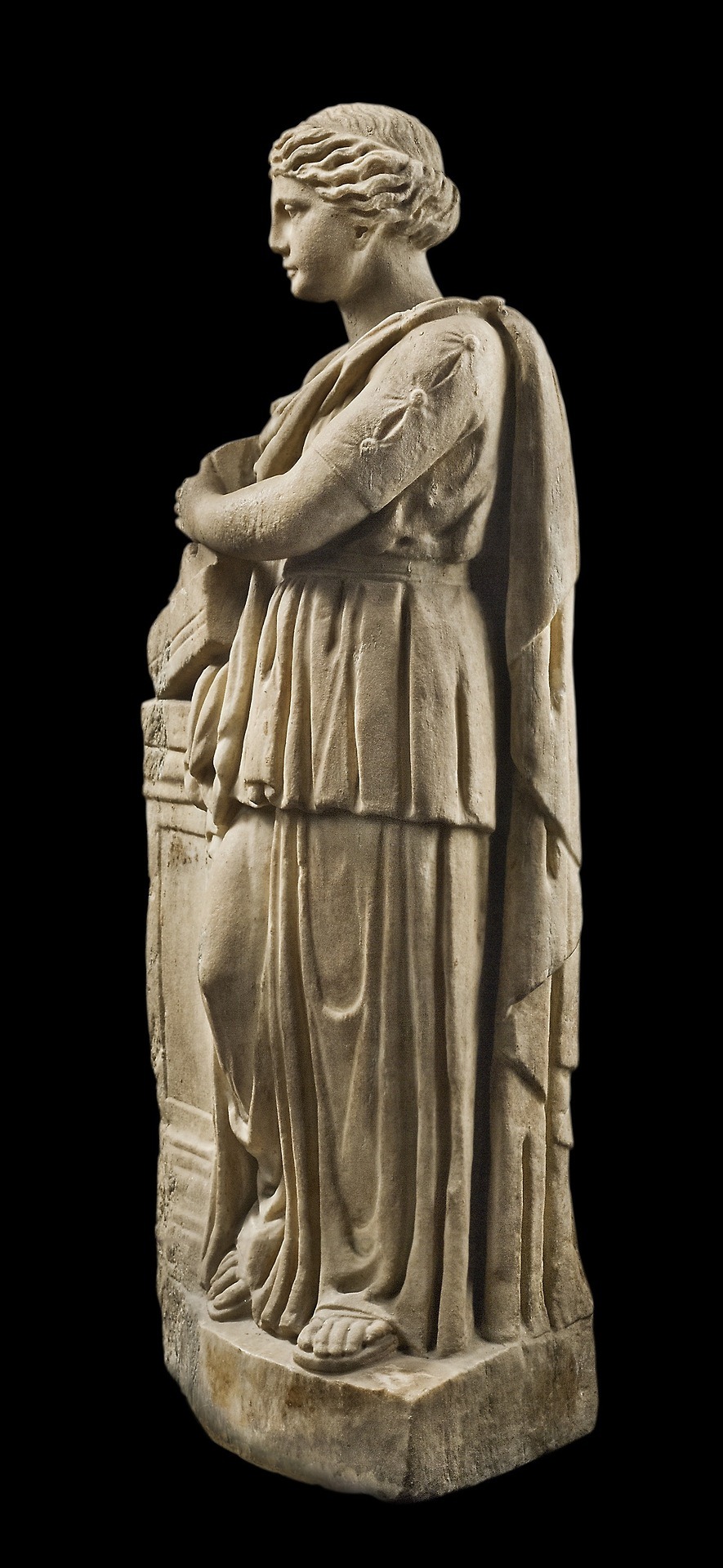
Roman Marble Statuette of A Muse Holding a Kithara, 2nd Century AD
74cm (29.1 in) high
1K notes
·
View notes
Photo

Gold Ring with Egyptian Eye Inlay, Middle Kingdom, C. 1963-1650 BC
Set in a modern 24K yellow gold ring. The eye is obsidian and limestone and was set into wood image.
2K notes
·
View notes
Photo



Haunted Meayll Hill Stone Circle, Isle of Man
Meayll Hill (Mull Hill) is not a true stone circle, but a unique group of Neolithic chambered tombs built around 3500 BC. These tombs are characteristic for Neolithic farmers in the British Isles, but the arrangement of 12 of them in ring formation is very unusual and no one knows why they were arranged this way. A group of stone foundations of Neolithic huts can be found nearby to the east with an ancient pathway running between the two sites.
According to local lore, some visitors have had unpleasant paranormal experiences at Meayll Hill, including the feeling of sudden disorientation. Others have seen unexplained moving lights and heard strange sounds, like the cadence of invisible horses trotting or galloping by. One tale says that a phantom army of horsemen has been seen riding along the circle.
The site is located just outside the village of Cregneash at the southern end of the Isle of Man, in the Irish Sea between England and Ireland.
Click here to aerial video of Meayll Hill.
#history#meayll hill stone circle#paranormal#isle of man#neolithic#chamber tomb#haunted#myths and legends#ruins#manx#cregneash
1K notes
·
View notes
Photo
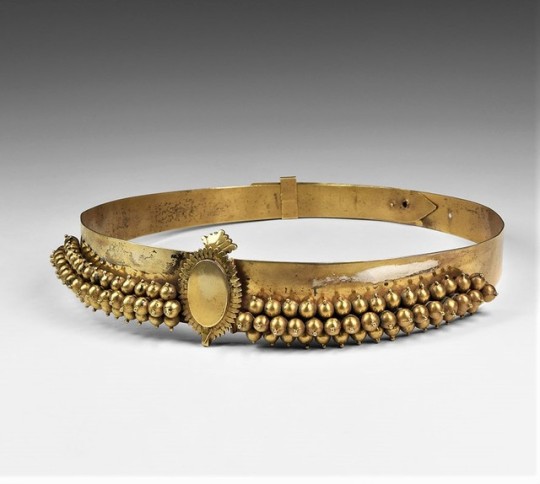
East European Gilt Wedding Belt, 19th Century AD
A silver-gilt belt with central medallion with plain oval center and sun-burst to the edge, to the top and crown; riveted to either side three rows of bells; to the back a buckle and strap, holes for pins to secure the belt. 215 grams, 20cm (8")
334 notes
·
View notes
Photo


Rare Gold Drachm from Thasos, C. 380 BC
The obverse has the image Dionysos wearing an ivy-wreath and the reverse has the inscription ΘAΣION behind Herakles, who's wearing a lion’s skin headdress, kneeling and shooting an arrow, a K is inscribed on the right, all within a linear square within an incuse square. This rare coin sold at auction for around 82,500 USD.
Thasos is an island off the ancient Thracian coast in the northern Agean Sea. The island was important in wine trade and also controlled rich gold and silver mines on the mainland. It was colonized at an early date by Phoenicians who founded a temple to the god Melqart, whom the Greeks identified as “Tyrian Heracles.” The temple still existed in the time of Herodotus.
819 notes
·
View notes
